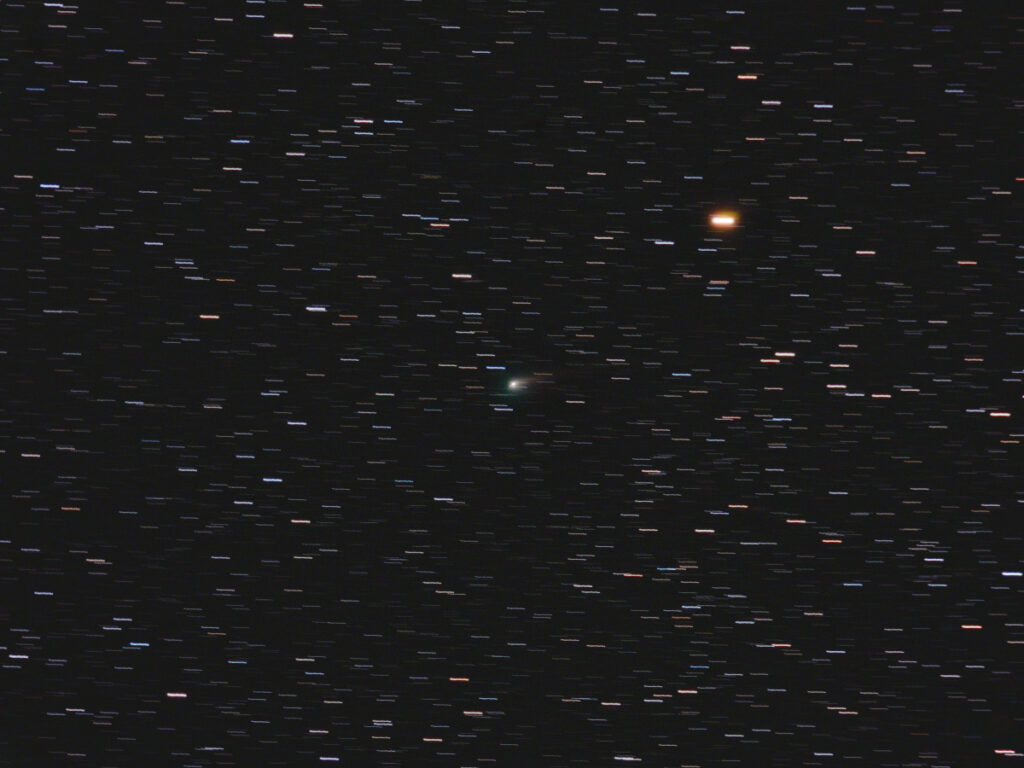
Telescope: ES Comet Hunter MN6 at f/4.8, Orion Atlas EQ-G
Camera: Baader modified Nikon 610
Filter: 2” Orion Imaging Skyglow Filter
Guide scope: Williams Optics 50mm, ASI290MM mini, PHD
Exposure: 34x60sec, ISO 400, saved as RAW
Darks: Internal (Long Exposure Noise Reduction On)
Flats: 32×1/250sec, tee shirt flats taken at dusk
Average Light Pollution: Red zone, Bortle 8, good transparency
Lensed Sky Quality Meter: 18.7
Stacking: Mean with a 1-sigma clip.
White Balance: Nebulosity Automatic
Software: Backyard Nikon, Nebulosity, Deep Sky Stacker, Photoshop
This image shows the motion of Comet 67P/Churyumov-Gerasimenko between 4:15am and 5:15am EST on the morning of 11/6/2021 as is swept past upsilon Gemini to the upper right in this field. The comet was glowing at about magnitude 9.9 at a distance of 39 million miles. Comet 67p is the resting site of the ESA Rosetta probe and Philae lander.
Comet 67P/Churyumov-Gerasimenko is currently crossing Gemini in the morning sky.
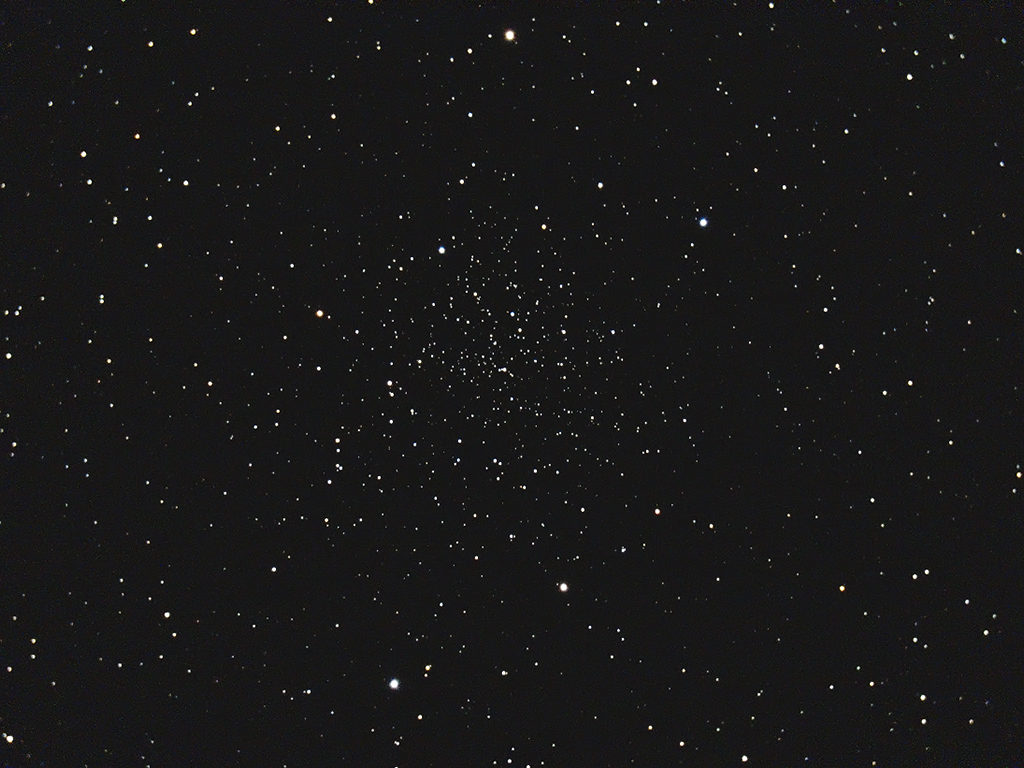

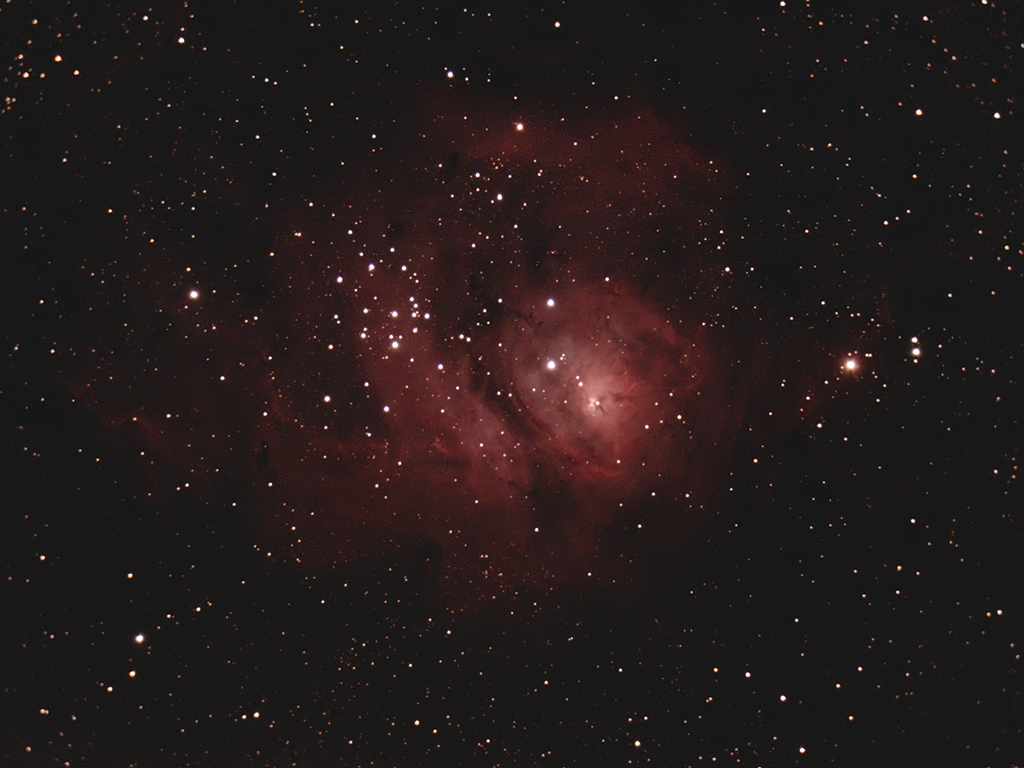
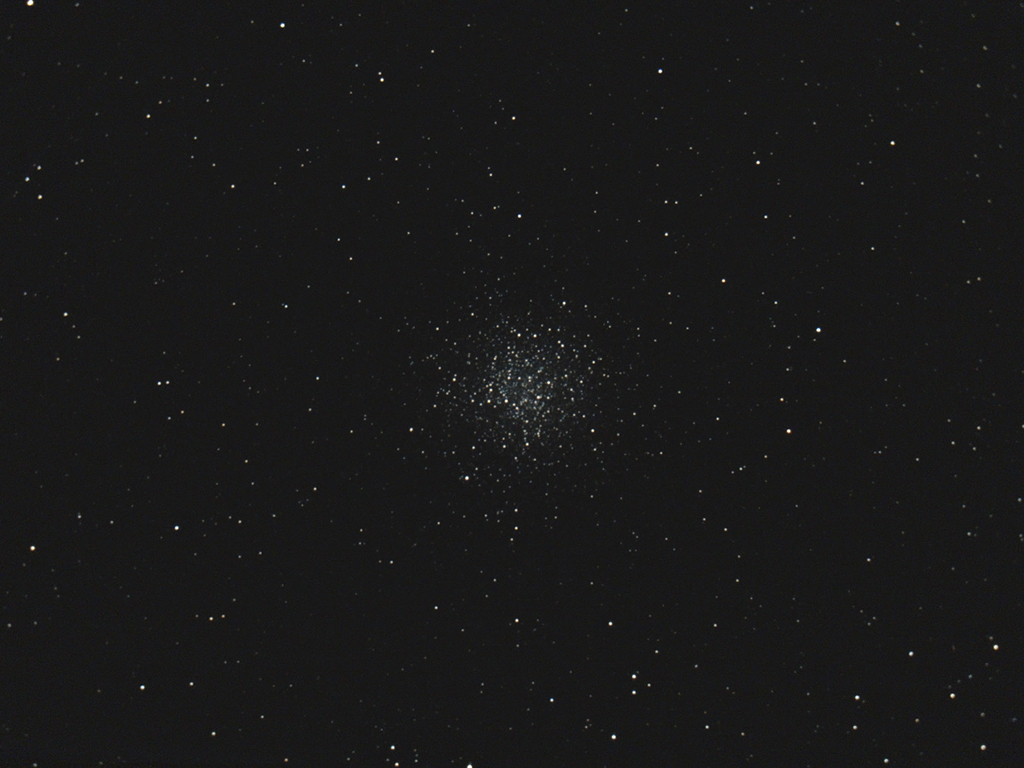
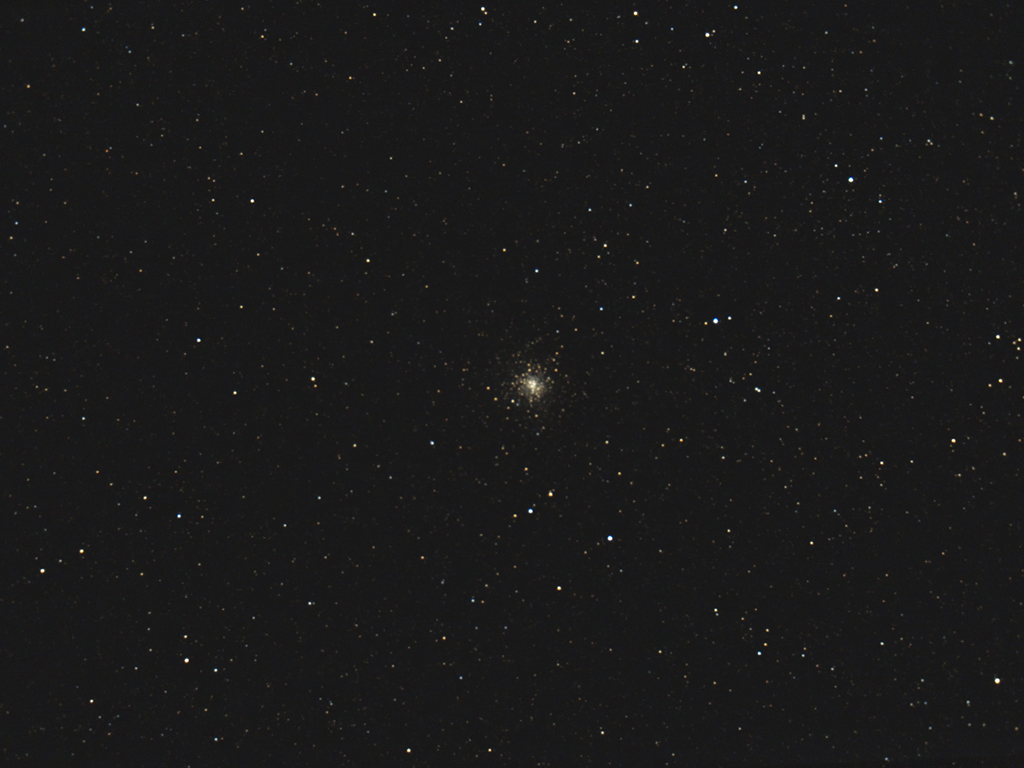

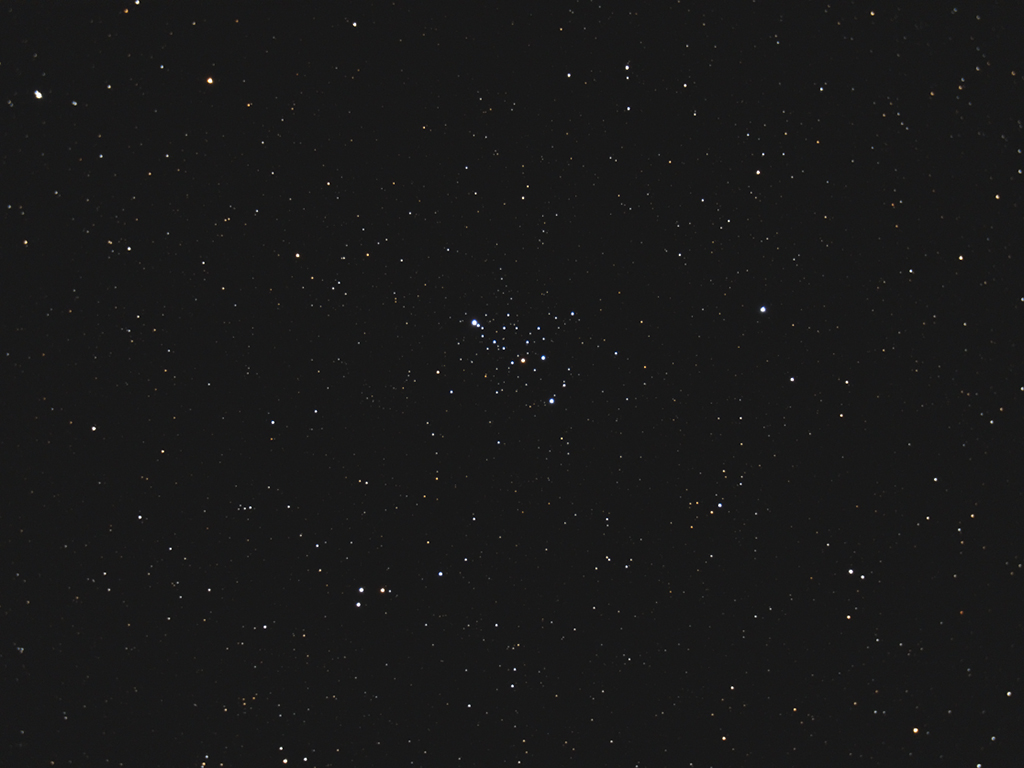
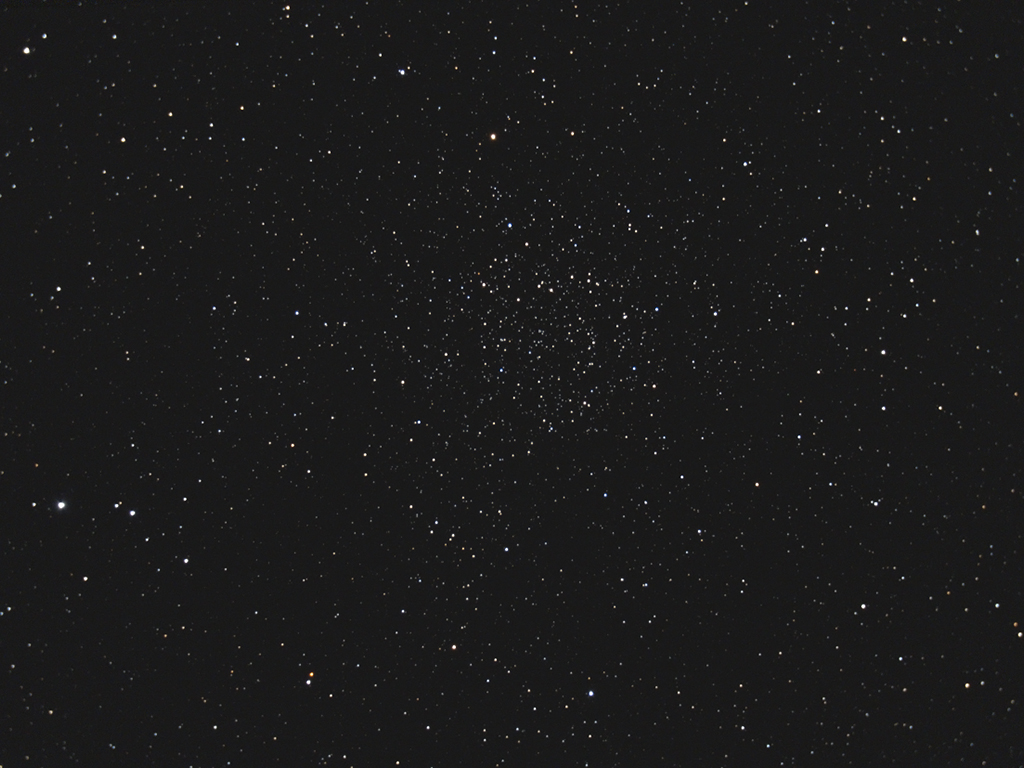
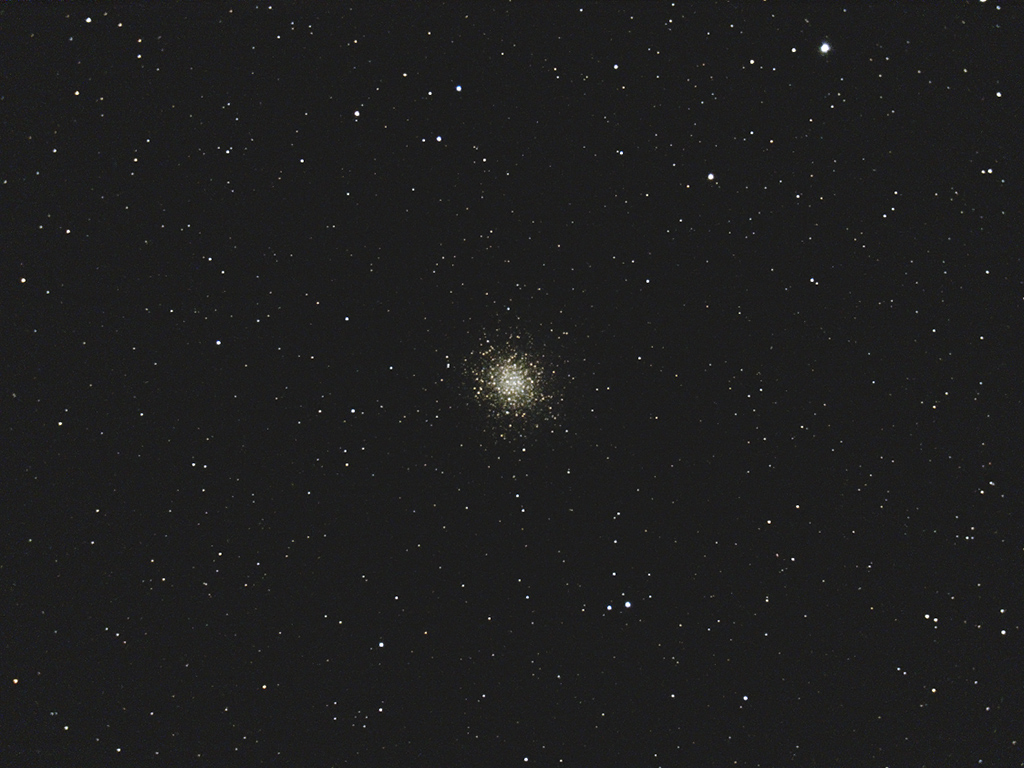
Recent Comments